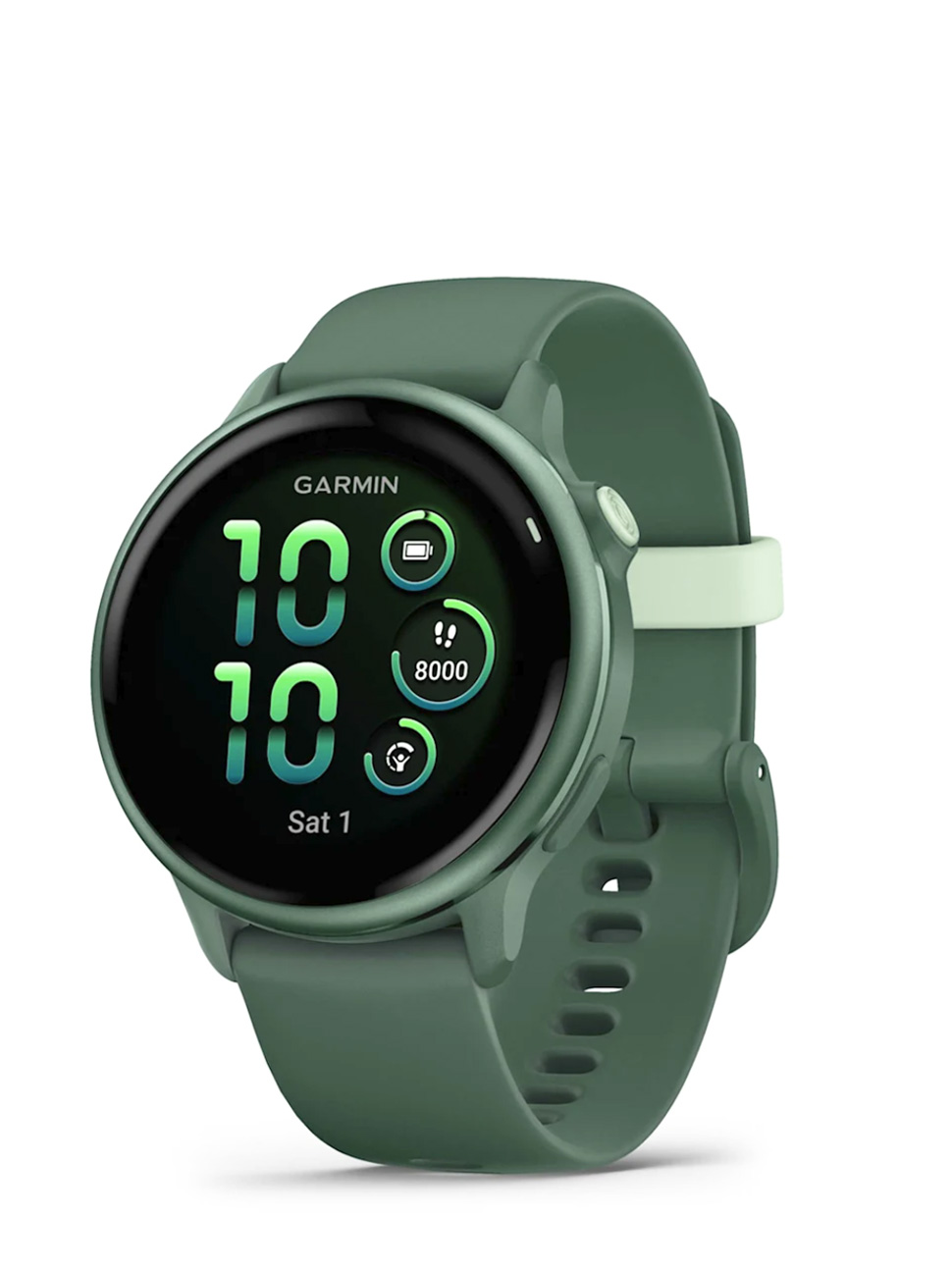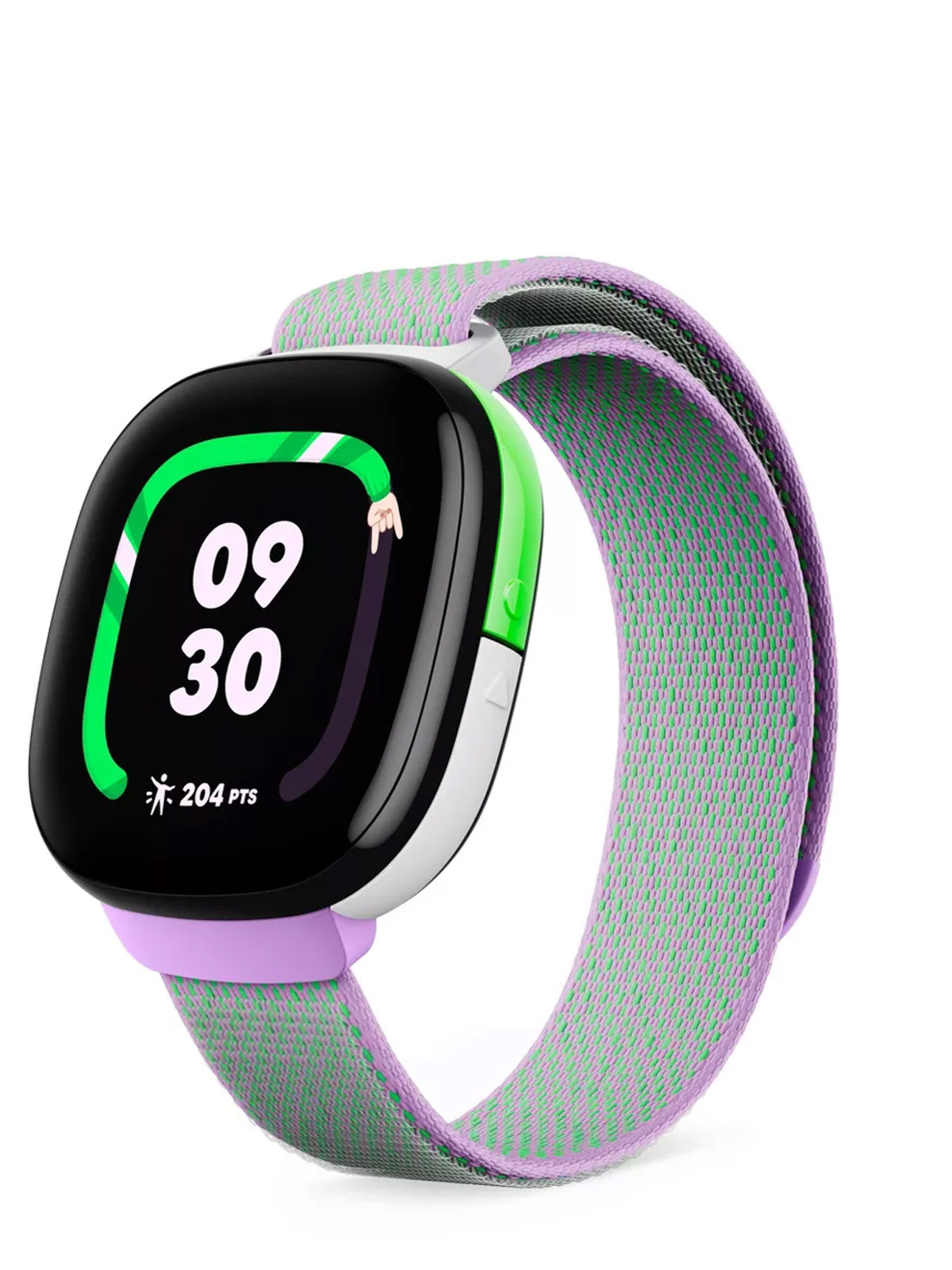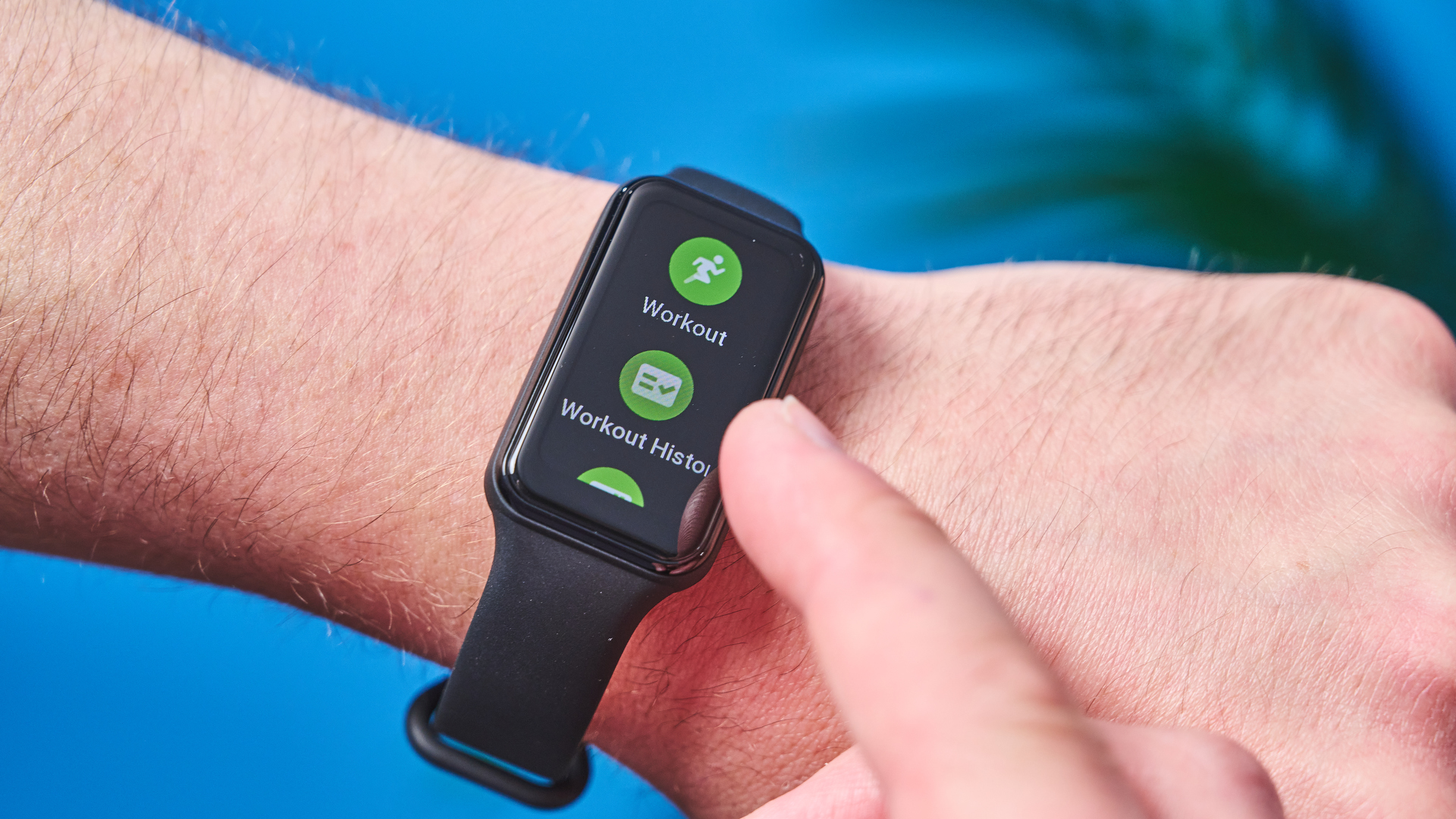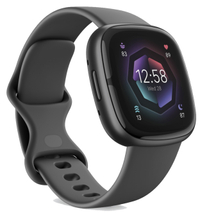Best Fitbit 2025: Pick the perfect fitness tracker based on our testing
These are the best Fitbits and Fitbit alternatives in 2025

We've been testing the best Fitbits for over a decade. In that time, they've gone from minimalist sleep- and step-trackers through to fully-fledged smartwatches. Then Google acquired the brand in 2021 and started integrating Fitbit smarts in its Pixel devices.
Now fully a part of Google, there are still several Fitbit-branded models available, including the Fitbit Charge 6, the best Fitbit fitness tracker in 2025.
However, with news of Google ending production of the Fitbit Sense and Versa smartwatch lines, and a lack of new releases over the past two years, Fitbit's future is hazy at best. This is why we've also included the best Fitbit alternatives like the Garmin Vivoactive 6, our favorite substitute for the Fitbit Sense 2.
But these aren't your only options. We've rounded up the best Fitbit fitness trackers and best Fitbit alternatives for a range of uses and budgets.
The quick list

The Fitbit Charge 6 is more than a step counter — it has built-in GPS, the ability to track your heart rate, sleep and fitness fatigue. There's a bright, beautiful AMOLED screen, all packed into the classic fitness tracker design. Plus, you get an ECG for monitoring your heart health and access to Google apps.

The Google Pixel Watch 3 is a Fitbit smartwatch in all but name. You can use some of Fitbit Premium's best features for free, alongside all the usual fitness tracking tools and onboard GPS. Plus, you get Google smarts, like Fall Detection, and access to all the Wear OS apps on the Google Play Store.

The Garmin Vivoactive 6 is a near-perfect modern stand-in for the aging Fitbit Sense 2. This translates to loads of fitness-tracking, training and wellness-monitoring tools along with just the right amount of smartwatch features. Plus, it plays nicely with Android and iOS, boasts excellent battery life and is as easy on the eyes as it is on the wrist.

If you want something that's more fitness-tracker than smartwatch, i.e., small and easy-wearing, then the $59 Samsung Galaxy Fit3 is definitely worth a look. A suitable dupe for the Fitbit Inspire 3 or Charge 6, it boasts a larger display, better battery and a cheaper price. However, it's Android compatible only.

The Amazfit Band 7 doesn't offer quite as refined a user experience as the Fitbit Charge 6 or Inspire 3 but it does track over 120 workout types and lasts for up to 28 days per charge. Oh, did I mention it's also less than $50 and works with both iPhone and Android?

Fitbit's latest kid-friendly fitness tracker has a new bolder, brighter design, two color options, and a more engaging experience for your young ones. It has built-in GPS for location tracking, but you'll need to take out the monthly subscription for access. There's also a suite of parental and privacy controls.
The best Fitbit fitness trackers you can buy today
Why you can trust Tom's Guide
Best Fitbit fitness tracker


Specifications
Reasons to buy
Reasons to avoid
The Fitbit Charge 6 is the gold standard fitness tracker, bundling all the health and activity monitoring features you'd expect alongside a hefty range of smartwatch-style additions, like support for Google Maps, YouTube Music and Google Wallet.
It's one of the few in the brand's range that retains the classic tracker design. Though it's not as slimline as the Inspire 3 or Luxe (which are specifically designed to be a bit less noticeable on your wrist), it does have a full color display.
This makes it easy to check your stats without opening the app on your phone, and we were impressed that this didn't drastically affect the battery life, as the Charge 6 should last you up to a week between top ups.
We found the battery would fall around 15% per day with moderate use (including tracking runs with the built-in GPS), which puts it in line with the week-long advertised rate, but if you keep the always-on display active, it declines faster.
You also get access to all of Fitbit's stress management tools (a mainstay on its devices), plus the EDA Scan app, which uses changes in your skin sweat levels and heart rate to assess your stress throughout the day.
After using the feature for several weeks, we found it a useful for reflection on what could be causing higher stress levels, but it's definitely not an essential part of the Charge 6, as the prompts only come some time you've experienced elevated stress.
During testing, we also compared the Charge 6 sleep data against the Oura Ring, our current gold-standard sleep tracker. The results were broadly similar (in part, thanks to the blood oxygen sensor on the Charge 6), which was a pleasant surprise.
The mix of features for the price makes the Charge 6 the best Fitbit for most people, but if you're after a more smartwatch-esque design, or want a more budget-friendly option, it's worth considering the Google Pixel Watch 3 or Inspire 3 instead.
- Read our full Fitbit Charge 6 review
Best Fitbit smartwatch


Specifications
Reasons to buy
Reasons to avoid
The best Fitbit smartwatch isn't even really a Fitbit. The Google Pixel Watch 3 combines the design and features of the Pixel range with Fitbit's tracking tech to create something approaching an Apple Watch competitor for Android.
This is its strength and weakness — Fitbit devices are so popular because you can use them with either smartphone (iPhone or Android), but focusing just on Android devices gives the Pixel Watch 3 a more integrated experience than any Fitbit before.
This seems to be the direction of travel for the Google-owned Fitbit, and while it won't suit everyone, we found that the blend of Google smarts and Fitbit health and fitness tracking worked surprisingly well.
It comes in two sizes (41mm and 45mm), which isn't a choice you've had with a Fitbit smartwatch before, four colors, and in Wi-Fi or LTE variants. And because it has built-in GPS, if you opt for the LTE edition, you can leave your phone at home but stay connected to calls, messages, and apps.
It's also brighter than the Pixel Watch 2, so we found it easier to see the display than on the older model, even in direct sunlight. But if you're wondering why we recommend the Pixel Watch 3 over the more classic Sense 2, there's a good reason.
Google made some of Fitbit Premium's best features available on the Pixel Watch 3 for free. So, for no additional charge, you can access the Daily Readiness Score and the new Cardio Load and Training Load scores without a subscription.
Since the watch's launch, Google has rolled out the Daily Readiness Score to older Fitbits as well, but there are plenty of other smartwatch features here too, like Loss of Pulse Detection and access to the Google Play Store's watch apps.
The main downside is the battery; it's only rated for 24 hours (36 hours in battery saver), and we found that, in practice, it actually drained faster than this, so you will need to charge the watch every day.
This is disappointing compared to the week you get out of the Sense 2, but it's also a more capable device, so for some people, the trade-off will be worth it.
- Read our full Google Pixel Watch 3 review
Best Fitbit alternative

Garmin Vivoactive 6
Specifications
Reasons to buy
Reasons to avoid
The Garmin Vivoactive 6 checks all the boxes if you're after the best Fitbit alternative. Compatible with both Android and iOS devices, it tracks 80 workout types and boasts many of Garmin's best fitness tools, like Body Battery (Similar to Fitbit's Readiness Score), comprehensive sleep-tracking analysis and loads of useful training features.
Lightweight and easy-wearing, a responsive and reasonably-sized AMOLED screen adorns the front, paired with two physical buttons. Like the Fitbit Sense and Versa 4, the Vivoactive 6 has a smattering of handy-dandy lifestyle features as well, including NFC for mobile payments, onboard storage for music and mirrored smartphone notifications.
There's also onboard GPS for location tracking but no altimeter for precise elevation data. Also, while this is one of the more smartwatch-looking devices in this guide, it doesn't come close to offering the selection of third-party apps and communication features as the Pixel Watch 3 above.
- Read our Garmin Vivoactive 6 hands-on
Best Fitbit for Android

Samsung Galaxy Fit3
Specifications
Reasons to buy
Reasons to avoid
The Samsung Galaxy Fit3 packs a lot of value into an extremely comfortable device with a surprisingly large (and bright) touchscreen. An excellent replacement for the Fitbit Inspire 3 in 2025, the Galaxy Fit3 offers nearly two weeks of battery and boasts a similar suite of sleep-tracking and wellness tools to the Samsung Galaxy Watch 7 and Galaxy Watch Ultra.
It also supports tracking for over 100 workout types and even has an onboard blood oxygen saturation sensor. Plus, similar to the Pixel Watch 3 and Garmin Vivosmart 6, safety features like fall detection come standard.
That said, like the Inspire 3, there's no onboard GPS for location tracking, so you'll need to carry your phone with you. Smart features are also all but non-existent. Finally, the Galaxy Fit3 is Android only.
Want to know more about how it stacks up against its Fitbit rival? Here's a spec-by-spec breakdown of the Samsung Galaxy Fit3 vs. Fitbit Inspire 3.
- Read our Samsung Galaxy Fit3 hands-on
Best cheap Fitbit


Specifications
Reasons to buy
Reasons to avoid
Amazfit has carved out a nitch in the affordable wearables category and the sub-$50 Amazfit Band 7 is easily the best cheap Fitbit alternative in 2025 thanks to its delightfully high-quality design, support for an enormous range of physical activities, outstanding battery life and compatibility with both Android and iOS smartphones.
Heck, the Band 7 even boasts impressive sleep-tracking insights, mind you, they're not as detailed as Garmin's or Google's. It also sports an onboard blood ox sensor and has alerts for abnormally high/low heart rates, along with some handy stress-tracking tools.
However, similar to the Fitbit Inspire 3, there's no onboard GPS and smart features are also limited (though it does offer voice support for Amazon Alexa). Still, for a device priced less than a night out on the town, it's going a lot going for it.
- Read our full Amazfit Band 7 review
Best Fitbit for kids

Fitbit Ace LTE
Specifications
Reasons to buy
Reasons to avoid
The Fitbit Ace LTE is the latest edition of Fitbit's kid-focused fitness tracker. The design is a lot more colorful and fun than the grown-up models, with a larger interface and bold design so that your kids actually enjoy wearing it.
The display is more interactive, with virtual badges and animated clock faces to keep your kids entertained. Plus, the Ace LTE uses games instead of targets to keep your children active throughout the day.
Although the experience has been adapted to make it more engaging to younger wearers, the watch resembles the rounded square design of the Versa 4 and Sense 2, with the same core fitness and sleep tracking features Fitbit is known for.
But at over $200, it's a lot more expensive than the sub-$80 Ace 3. And you need to take out a $10 monthly subscription if you want to use the onboard GPS to keep tabs on your kids' location. This tips the first-year cost higher than the Sense 2.
However, you may feel its worth it for the peace of mind you get with a reputable brand behind these kid-tracking features. Fitbit is one of the few recognizable names in this space, and you can tweak the device's privacy settings using the built-in parental controls.
- Read our Fitbit Ace LTE hands-on review
Also tested
Fitbit Inspire 3
The Fitbit Inspire 3 retains all the classic Fitbit features, like sleep tracking, activity logging, and heart rate monitoring, Impressively, it can last 10 days between charges, even with its bright color display. Plus, you can purchase the additional Clip if you want to remove the straps and attach it to your clothing.
Read our full Fitbit Inspire 3 review
Before the Pixel Watch 3, the Sense 2 was the closest Fitbit has ever come to developing a health-focused Apple Watch alternative. If you want Fitbit's fitness tracking, health monitoring tools on an iPhone, this is your best option. And it has a blood oxygen sensor, a feature currently disabled on Apple Watches.
Read our full Fitbit Sense 2 review
Features compared
| Header Cell - Column 0 | Fitbit Charge 6 | Pixel Watch 3 | Garmin Vivoactive 6 | Galaxy Fit3 | Amazfit Band 7 | Fitbit Ace LTE |
|---|---|---|---|---|---|---|
Price | $159 | $349 | $299 | $59 | $49 | $229 (+$9.99 per month) |
Screen size and type | 1.4-inch AMOLED | 1.27-inch (41mm), 1.46-inch (45mm) AMOLED | 1.2-inch AMOLED | 1.6-inch AMOLED | 1.5-inch AMOLED | 1-inch OLED |
Weight | 30 g | 31 g (41mm), 37 g (45mm) | 23 g | 37 g | 28 g | 28 g |
Battery life | 7 days, 5 hours with GPS | 24 hours (41mm), 48 hours (45mm) | 11 days, 21 hours with GPS | 13 days | 12 days | 16 hours |
Built-in GPS | Yes | Yes | Yes | No | No | Yes |
Touchscreen | Yes | Yes | Yes | Yes | Yes | Yes |
Mobile payment | Yes | Yes | Yes | No | No | No |
Music storage | No | Yes | Yes | No | No | No |
Swim tracking | Yes | Yes | Yes | Yes | Yes | No |
How we test the best Fitbits
We've been testing Fitbits for over a decade, starting with the diminutive Fitbit Flex back in 2014. As the years have passed, the brand's wearables transitioned from basic (but convenient) step counters to smartwatch-esque devices.
So the way we tested the best Fitbits has changed over the years too. It was once enough to strap them to our wrist, check they were comfortable, and see how accurate the pedometer was.
These are still some of the most important areas we look at, but now we wear them overnight to experiment with the sleep tracking features and check that they don't break when exposed to some sweat, rain or other moisture.
A crucial factor is the battery life, looking at how each device compares to Google's quoted battery specs. This is also a factor in how we rank and compare Fitbit devices. But so are the fitness features.
We try the automatic workout-tracking, manually start sessions, and take the devices outdoors to see how the GPS performs. We often compare the results against other Fitbit devices, and, in some cases, the best smartwatches.
FAQs
Is it still worth buying a Fitbit?
Google acquired Fitbit in 2021 and has made some substantial changes to the lineup and experience. The app was redesigned, challenges were removed, you now need a Google login to sign into the app, and the Fitbit web dashboard is no more.
The search giant also removed features from the Versa 4 and Sense 2 watches, making them exclusive to Google Pixel Watch models instead. Then, in 2024, the company released the Pixel Watch 3 'powered by Fitbit'.
From what we've seen so far, Google views Fitbit as a software service more than a hardware brand. Over the next few years, it's likely that we'll see fewer Fitbit devices and more Fitbit features in Google-branded products.
So it's a complicated picture and, to some, it seems like Google is slowly killing Fitbit. But this is more of a long-term problem. Right now, you can still buy a Fitbit (or Pixel Watch) and access the brand's sleep, fitness, and health tracking features on comfortable, and (mostly) affordable devices.
When will Google release new Fitbit devices?
At the moment, there are no signs of a new fitness tracker or smartwatch from the Google-owned brand.
Before Google acquired Fitbit, the company settled into an annual refresh of its lineup, launching new products each fall. However, the past few years have only seen sporadic new releases.
The most recent devices include the Fitbit Ace LTE, which launched in June 2024, and the Fitbit Charge 6, which came out in September 2023. That is unless you count the Google-branded Pixel Watch 3, which also launched in mid-2024.
Given most technology brands keep to a fairly regular schedule, we could reasonably expect a new device in the Charge range, but as we've explored before, Google is slowly reducing Fitbit from a device manufacturer to a brand name.
So the jury is still out on what will happen next. We don't expect the company to release any more Fitbit-branded smartwatches, favoring the Pixel line instead. But as for the classic trackers, it's still up in the air.
What are some good Fitbit alternatives?
Loads of companies make Fitbit-like devices but only a small few are as good as the namesake wearable. The best Fitbit alternatives come from big-name brands, including Garmin, Samsung and Apple as well as smaller manufacturers, like Amazfit.
For example, the Amazfit Band 7 and Samsung Galaxy Fit3 are both adequate alternatives to the Fitbit Inspire 3. Better yet, they're less expensive, too. Here's a closer look at the Inspire 3 vs. Galaxy Fit3 (note: the latter is Android only).
Prospective Fitbit Charge 6 owners may want to also check out the Garmin Vivosmart 6 for something with a similar form factor or Garmin Lily 2 Active if onboard GPS is a must.
The best alternative to the Fitbit Sense 2 is easily the Google Pixel Watch 3, but for iPhone users, the Apple Watch SE 2022 is your best bet. Just be aware, that an Apple Watch SE 3 may be on the horizon soon.
Finally, for kid-friendly alternatives to the Fitbit Ace LTE, consider grabbing a Samsung Galaxy Watch 7 and switching it into child mode (Apple offers a similar mode for its wearables) or the forthcoming Pinwheel smartwatch. Like the brand's smartphones, the Pinwheel is built specifically with youngsters (and parents) in mind. It also looks kind of like an Apple Watch Ultra 2, which is cool.
What is Fitbit Premium?
Fitbit trackers sync data to the Fitbit app, where you can keep tabs on your activity, sleep, and heart rate. But, by default, there's not a lot of analysis or actionable insights. For that, you'll need a Fitbit Premium subscription.
Fitbit Premium costs $9.99 per month or $79.99 annually, and that gives you access to more detailed insights, especially around your sleep data. And, if you've been searching one of the best workout apps, Fitbit Premium includes video workouts and some classes.
Most recently, Peloton added some of its sessions to Fitbit Premium alongside classes from Alo Moves and Yoga with Adriene. So, if you're willing to embed yourself in Fitbit's ecosystem, it can be a good value option.
But whether Fitbit Premium is worth it depends on your goals. If just you want to keep tabs on your daily activity, then you may not need to subscribe. But, if you're interested in learning more about how you slept and how to improve your training, it's a good option.
If you're sold on a Fitbit tracker, but you're not sure on Fitbit Premium, most of the brand's devices come with a six-month free membership for you to give the platform a spin and see if it'd be worth it for you.
Sign up to get the BEST of Tom's Guide direct to your inbox.
Get instant access to breaking news, the hottest reviews, great deals and helpful tips.

Dan Bracaglia is the Tom’s Guide editorial lead for all things smartwatches, fitness trackers and outdoor gear. With 15 years of experience as a consumer technology journalist testing everything from Oura Rings to instant cameras, Dan is deeply passionate about helping readers save money and make informed purchasing decisions. In the past year alone, Dan has assessed major product releases from the likes of Apple, Garmin, Google, Samsung, Polar and many others.
An avid outdoor adventurer, Dan is based in the U.S. Pacific Northwest where he takes advantage of the beautiful surroundings every chance he gets. A lover of kayaking, hiking, swimming, biking, snowboarding and exploring, he also makes every effort to combine his day job with his passions. When not assessing the sleep tracking and heart rate accuracy of the latest tach gadgets, you can find him photographing Seattle’s vibrant underground music community.
- James FrewBuying Guide Editor


